A Journey of Changed Perspectives Leads to a Historic Connection Between Cisco and HBCUs


By Scott McGregor
Black History Month is an opportunity for reflection and education. For me, it began with my experience attending segregated schools until 1972. My experience with racism and segregation shaped my decision to attend North Carolina Central University (NCCU), one of our nation’s Historically Black Colleges & Universities (HBCUs). For the first time, I learned about heroes in American history that looked like me. This unlocked a sense of belonging and possibility that has continued to motivate me many years later.
The safety I feel at Cisco mirrors the safety I felt at NCCU. When I joined Cisco in 2008, I viewed it as an opportunity to work in information technology and build a better life. Quickly, I joined an Employee Resource Organization that connected and celebrated our African American/Black (AA/B) employees. With our shared experiences as a unifier, I was able to become more authentic in what I was bringing to work, as well as more committed to the work I was driving. In 2014, I was given the opportunity to help build stronger relationships with HBCUs to accelerate young AA/B talent to Cisco. Over the next several years, I visited HBCUs to share the value of working at Cisco, and this outreach has since become a key piece of our talent acquisition strategy.
Everything accelerated in 2020. In January of that year, I, alongside other AA/B employees met with Cisco’s Executive Leadership Team. This meeting established a set of executive-sponsored activities to accelerate representation, promotion, and investment in AA/B employees, as well as education for external communities. With the murder of George Floyd in May, these activities expanded to become Cisco’s Social Justice Actions, a five-year commitment to the Black community as well as a blueprint for how Cisco will respond to injustice and address inequity for any community. These twelve actions are led centrally by an Inclusive Future Action Office where I currently lead Action 8, Commit to HBCUs.
Now, almost two years later, I am helping to lead one of the largest philanthropic efforts for HBCUs in corporate history, while also fulfilling a lifelong dream of giving back to a community that shaped the leader I am today. Our commitment and framework for HBCUs was launched in May of last year. To date, we have impacted more than 30 schools in 11 states through technology investments. We have awarded $12.5 million in endowments and $7.5 million in technology upgrades for STEM students, and we have a deep alliance with our partners including the Student Freedom Initiative.
“As our first corporate supporter, Cisco demonstrates leadership and an unwavering commitment to social justice and recognition of the enormous capability of Historically Black Colleges and Universities,” shares Mark A. Brown, Executive Director at the Student Freedom Initiative.
This quote brings to life our purpose, to Power an Inclusive Future for All, with a commitment to lead. Black History Month is a time for reflection and education, both of which I am proud to do at Cisco. Looking forward, I am committed to deepening our impact and sharing how we are doing in a future communication.
Previously published on the Cisco Corporate Responsibility Blog and on 3BL Media.
Image credit: Nqobile Vundla via Unsplash
Our Suggestions on How to Help Ukraine


Russia’s invasion of Ukraine is becoming more of an awful humanitarian catastrophe by the hour. Inspired by Jane Lytvynenko, a research fellow at the Shorenstein Center, we’ve put together a list of NGOs that are doing whatever they can to help the 44 million-plus Ukrainian nationals who are under siege.
Editor's note: For more background on what led to the invasion of Ukraine, check out this Twitter thread.
Medical assistance on the ground
The U.S.-Ukraine Foundation has just announced the launch of Operation Ukraine Airlift, a program that seeks to deliver medical supplies throughout Ukraine. The group is working with the Afya Foundation, which rescues unused medical supplies that would have otherwise been discarded. In addition to financial donations, this partnership is seeking the help of airlines or stakeholders in the aviation sector that could airlift much-needed supplies to a neighboring country such as Poland, from which they could then be hauled into Ukraine by truck.
Another group leading on providing medical assistance is United Help Ukraine. Beyond the procurement of medical supplies, the group provides humanitarian aid for families already caught in the east’s war zones, and it also supports wounded soldiers and their families rebuild their lives. Donations can be sent through PayPal.
Assistance for children and families
Voices of Children has already been doing good work on behalf of children who have been subjected to armed conflict in eastern Ukraine. This NGO provides mental health services for children in the Donetsk and Luhansk regions who have been traumatized by war. Sadly, this organization will have more work ahead of them — for years. You can donate quickly here.
Libereco, a German-Swiss NGO that has focused on securing human rights in Ukraine and Belarus since 2009, has set up an emergency fund for families. The organization has promised that 100 percent of donations will go toward helping families evacuate, offer medical assistance and help repair houses caught in the armed conflict.
Revived Soldiers Ukraine provides support to soldiers, their families and citizens who have been affected by the military conflict in eastern Ukraine. You can read the profiles of some of the people who this organization has worked with, and donations that can help continue this group’s work are also accepted via PayPal.
Support a free and independent press in the Ukraine
Social media isn’t exactly helping us discern what exactly is happening on the ground. What we do know is that, so far, too many people have already died. The good folks at the English-language Kyiv Independent are reporting on the invasion as best they can — you can either become a member or donate directly through GoFundMe.
Military aid
Yes, it’s come to this. New Eastern Europe has a long list of suggestions on how to give assistance to Ukraine’s military. Organizations on this front include Come Back Alive, which buys expensive equipment such as thermal imaging cameras and night vision goggles for Ukrainian soldiers. Citizens who have some Bitcoin to donate have that option to transfer funds: In fact, as of press time, this group has received the equivalent of $400,000 in crypto donations.
Army SOS manages the purchases of military equipment, and it says it will transfer all of the items directly to the Ukrainian military. Apparently, that was too much for Patreon, which as of now has removed its donation page. Expect other donation pages to appear, however.
Any additional suggestions? Email the editors and we’ll consider adding to this list.
Image credit: Yehor Milohrodskyi via Unsplash
The Long Goodbye to Overdraft Fees Continues
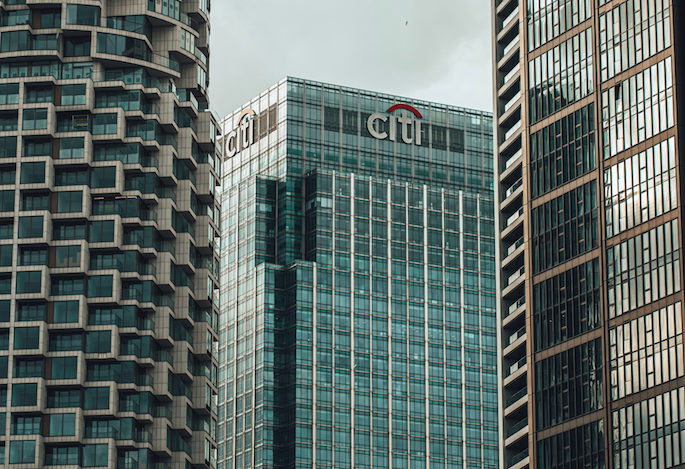

As many as 1 in 4 U.S. households are unbanked, with high banking fees among the reasons that consumers say they avoid signing up for any financial services with a bank. The alternatives, such as check cashing services, are also expensive, but the fees charged by big banks often add up to much more. Overdraft fees in particular can be devastating for families who live paycheck to paycheck.
With the average charges per overdraft approaching $35 a pop, such fees often occur at the worst times for people — as the global pandemic has proven. Today, Citi, the fourth-largest bank in the U.S., has pledged to stop this practice.
By this summer, Citi says it will eliminate overdraft fees, returned item fees and similar charges in a bid to expand “financial inclusion.” The company claims it has already minimized overdraft fees for the past 20 years. Nevertheless, with this news, Citi stands out for being the first U.S. “mega bank” to stop what critics have long described as a “predatory” banking practice that hurts the poorest customers the most. Banks can quibble over whether overdraft fees are a significant revenue stream for them or not, but the truth is that the billions in revenues that these fees generate largely falls on the backs of the working poor.
Of course, the ever-evolving banking market has something to do with this shift. Banks today have plenty of competition, including credit unions and online banking services, many of which have either minimal or zero fees: Aspiration and Greenwood are among such options.
According to data from the Consumer Financial Protection Bureau (CFPB), Citi generated $70 million from overdraft fees and similar charges for the first nine months of 2021. That may seem like a lot, but it certainly pales in comparison to its competitors, several of which raked in hundreds of millions of dollars from overdrafts, with one bank reaching the $1 billion mark.
Citi’s announcement follows the lead of other banks that have taken similar measures. Capital One, for example, said last December that it would nix those charges and provide overdraft protection for free. Last month, Bank of America also said it plans to reduce overdraft fees, which would reduce such revenues by 97 percent from 2009 levels. Ally stopped imposing overdraft fees during the height of the pandemic, then last year the bank decided that it would eliminate them for good.
Image credit: Joshua Lawrence via Unsplash
Activism Works: FERC Raises the Bar for New Gas Pipeline Approvals
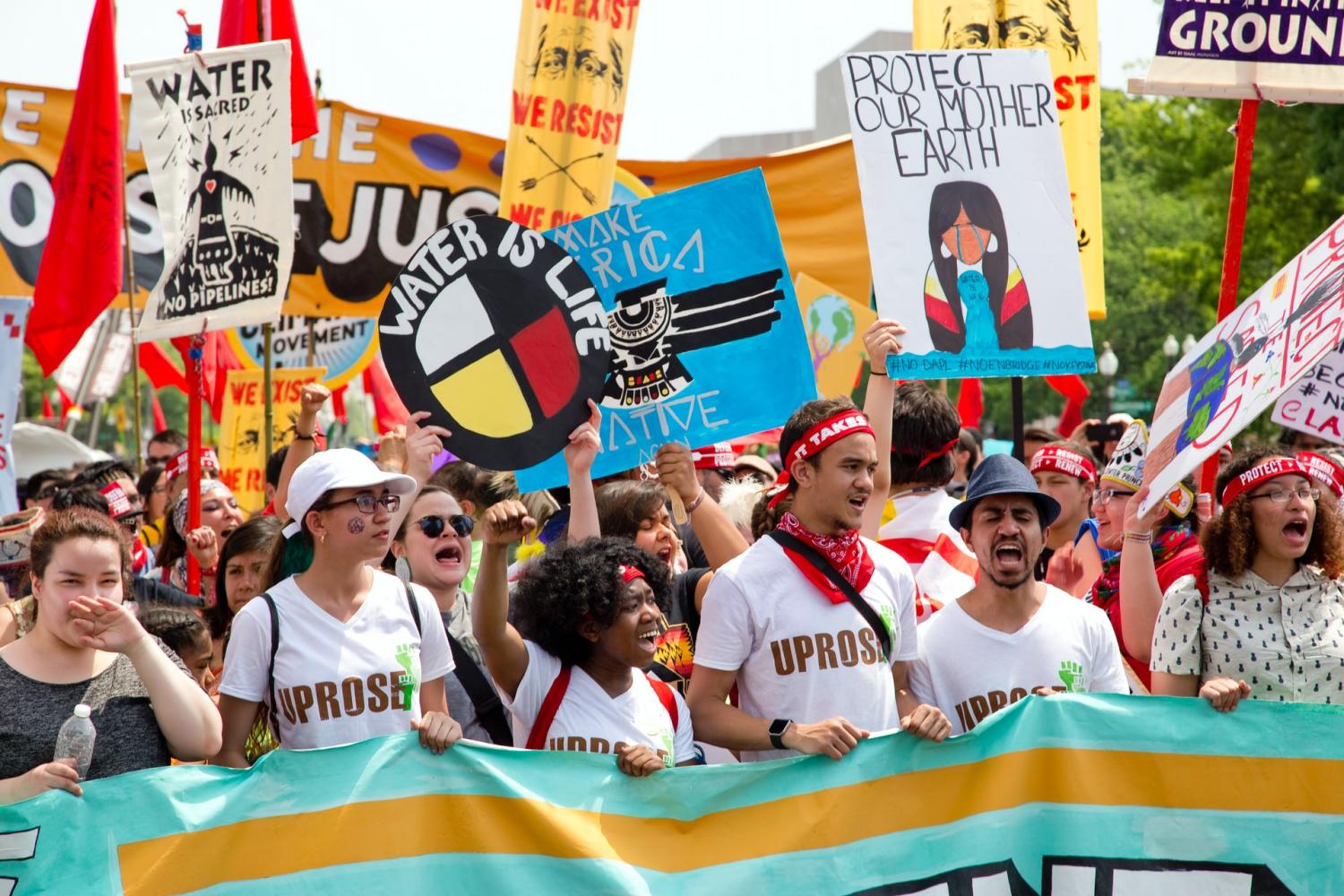
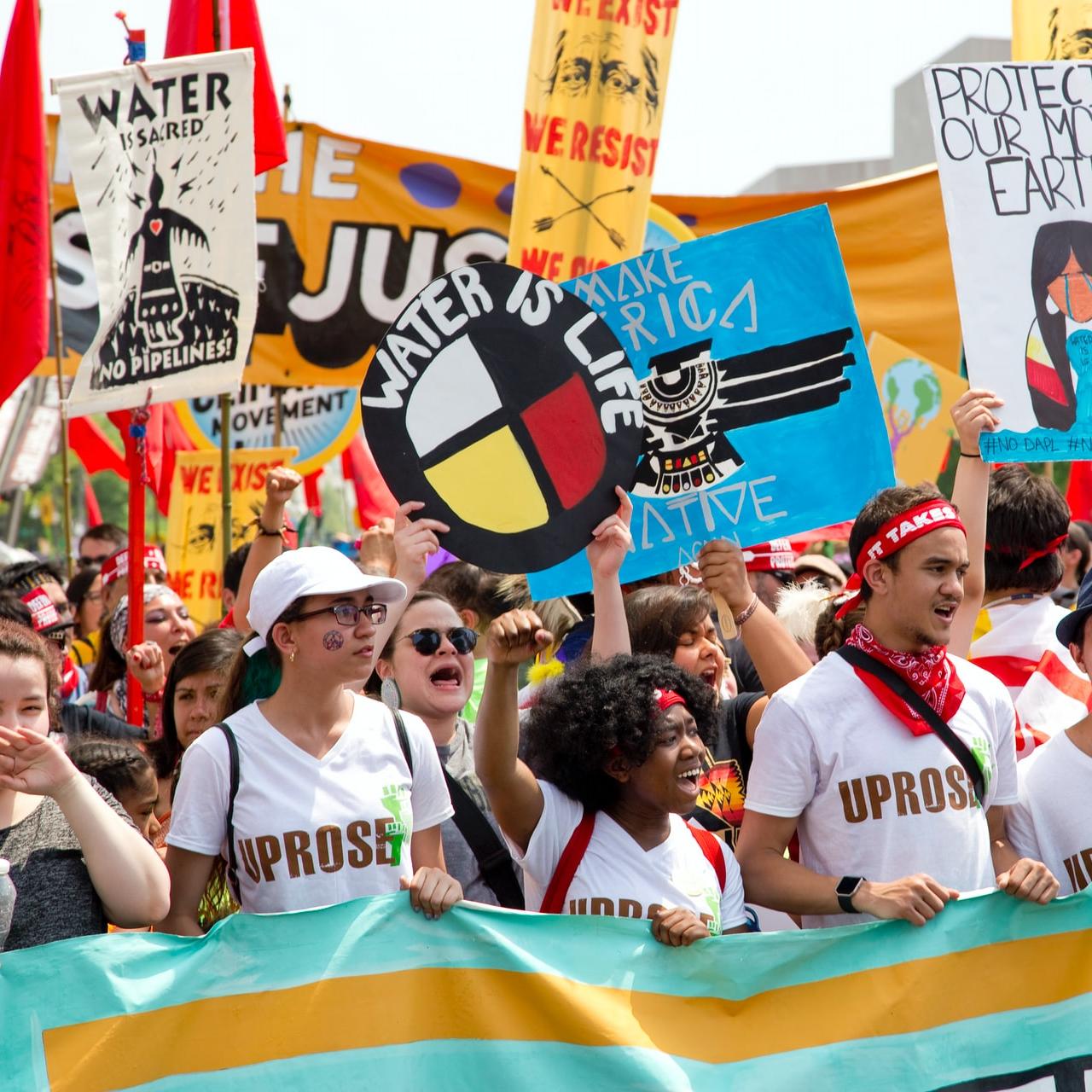
An environmental protest in Washington, D.C., during the summer of 2017
Environmental activists and local stakeholders have racked up a series of legal victories against new gas pipelines in recent months, prompting the Federal Energy Regulatory Commission (FERC) to take a close look at the big picture. If new pipeline approvals are failing in court, then FERC’s standards are either too low, out of date or both. The standards need to be updated, and that is exactly what FERC has done, in a set of two new policy statements announced last week.
New natural gas pipelines are not a sure thing any more
In past years, FERC has denied permission for new gas projects on grounds of need. Failure to prove demand, for example, was a leading factor in FERC’s decision to hit the brakes on the proposed Jordan Cove gas export terminal in Oregon, in 2016.
However, many other projects have slipped under that bar, and pipeline opponents have been making the case for a more holistic – and realistic -- approach that factors in climate impacts, social justice issues and other elements.
It’s no coincidence that many of the recent courtroom failures have occurred in Virginia and the surrounding mid-Atlantic region. The area is already saturated with gas infrastructure, and not all of it is going to serve the needs of area residents and businesses. In recent years much of the focus has been on increasing U.S. gas exports to Europe and elsewhere, weakening the need-based case for developers.
In addition, legal resources in the Virginia area are strong, education levels are high, incomes are high, land values are high and the emerging offshore wind industry promises to bring a clean energy alternative to mid-Atlantic states within the next few years.
New energy efficient heat pumps are also providing property owners with a zero-emission alternative for home heating and cooling. The rising trend of replacing gas with heat pumps and other electric appliances may have factored into the recent decision to cancel the Atlantic Coast pipeline, which would have run from West Virginia into Virginia and North Carolina.
Activists speak, and FERC (finally) listens
In a summary of the new FERC statements last week, the Financial Times listed two other failed pipeline projects in the mid-Atlantic area, including the PennEast Pipeline from Pennsylvania to New Jersey, which was withdrawn last year after meeting “significant resistance.”
The Chickahominey Pipeline in central Virginia was also suspended just last week after “heavy opposition from environmental groups.” In addition, the Mountain Valley Pipeline through Virginia and West Virginia appears ready to die on the vine.
All of this trouble could have been avoided if FERC had not allowed the projects to move forward in the first place.
“Activists say the case-by-case approach of taking on individual pipelines is expensive and inefficient, and that regulators have been too willing to approve projects that later run into trouble in the courts,” Financial Times reporter Myles McCormick observed.
FERC finally raises the bar
In a press release announcing the two new policy statements, FERC made it clear that the rash of courtroom knockdowns was a leading factor in its decision to give the approval process a second look.
“In addition to providing an analytical framework for many need, environmental and public interest issues that arise when companies seek to build new natural gas facilities, the certificate policy statement and interim greenhouse gas (GHG) policy statement are intended to improve the legal durability of the Commission’s natural gas certificate and LNG decisions following a series of court decisions raising concerns about the Commission’s prior approach,” FERC explained.
“If we are going to ensure legal durability of our orders, it is essential that the Commission satisfy its statutory obligations the first time,” FERC Chairman Rich Glick emphasized. “I’m proud of these policy statements because they provide a forward-looking declaration on how the Commission intends to execute its authority to consider proposed infrastructure projects in a manner that is responsive both to all the interests at stake and to the direction of the courts.”
One of the two new statements is called the Updated Certificate Policy Statement. It builds on a previous statement from 1999, to clarify FERC’s decision-making process.
“…the Commission intends to consider all impacts of a proposed project, including economic and environmental impacts, together,” FERC explained. “It also calls for a robust consideration of impacts to landowners and environmental justice communities in the Commission’s decision-making process.”
In addition, FERC will no longer rely on previous agreements as a sort of automatic explanation of need. Instead, the Commission will examine new evidence of need, including demand projections and potential cost savings to customers, among other factors.
Finally, action on natural gas and climate impacts
The second statement is the Interim GHG Policy Statement, and it describes an even more significant change in the approval process. Instead of simply quantifying greenhouse gas emissions related to the construction and operation of the project itself, the new policy enables FERC to consider other emissions “resulting from the upstream production and downstream combustion of transported gas.”
That means everything is on the table, including fugitive emissions and other impacts from natural gas drilling sites, as well as emissions from power gas plants and other end users.
FERC emphasizes that both of the policy statements are explanatory in nature. They do not establish binding rules.
Still, they provide FERC with a firm legal footing for rejecting projects that harm the local environment, burden the US with additional greenhouse gas emissions, disrupt communities, and upset resourceful property owners.
If natural gas stakeholders want to continue holding out their product as a “clean” alternative, FERC just made their job a lot harder.
Image credit: Vlad Tchompalov via Unsplash
New Partnership Helps Underserved California Farmers Go Organic


Three organizations have recently come together to extend technical resources, financial assistance and direct market access to historically underserved California farmers — especially Latinx and other farmers of color — in farming regions including Central California while boosting the amount of the state's farmland used to grow organic produce.
Daily Harvest, American Farmland Trust (AFT), and California Certified Organic Farmers Foundation (CCOF) have kicked off a multi-year partnership to help 100+ farmers implement regenerative agricultural practices and strengthen their farms’ long-term viability. According to the partnership, its “collective, long-term goal is to foster more profitable, sustainable farms in the U.S., making nourishing, responsibly-grown fruits and vegetables accessible for all.”
Building successful, viable farms and scaling organic farming in California
More than a third of vegetables and two-thirds of fruits and nuts for U.S. consumption are grown in California. Yet, “many farmers are struggling right now, with the pandemic upending markets, labor availability, input prices, and it’s further compounded by [California’s] historic drought [and] increasing climate-related natural disasters,” says Tom Stein, California Regional Director at AFT, a nonprofit that has supported the conservation agriculture movement since 1980.
AFT, whose motto is “No Farms, No Food, No Future,” and CCOF, a nonprofit founded in 1973 by California farmers who support the state’s certified organic program, have found an ally in Daily Harvest, a meal prep delivery service with a focus on organic ingredients.
Specifically, they will offer support to more than 100 farmers through one-on-one financial and technical assistance, workshops and business planning that marginalized farmers otherwise struggle to access. The financial assistance includes “supporting ten farmers with [up to] $10,000 a year for three years” to help transition their land from conventional farming to organic, CCOF Program Manager Adrian Fischer told TriplePundit.
The program’s participants will also benefit from the opportunity to join Daily Harvest’s supply chain so they can sell their crops with premium price guarantees.
A partnership designed to address systemic inequities
Stein offered an example of the type of farmer the program will help, explaining: “Consider a farmer growing mixed vegetables on a 5-acre farm in the San Joaquin Valley. They operate on a year-to-year lease and have relocated and farmed different lands several times over the past 15 years they’ve been farming. Most of the labor is done by hand and a small tractor, and they are barely profitable.”
Stein continued, “These farmers work another job in the city and farming is their second job. The surrounding wells on neighboring farms, essential to irrigating crops, are going dry. They are afraid their well may be next and they won’t be able to afford to repair it. They lost a lot of sales during the pandemic and have had to pay higher costs for water, irrigation materials, and fertilizers due to supply chain disruptions and drought, and they aren’t sure how long their farm will survive.”
In response, says Stein, the partnership will prioritize “practices that help conserve soil and water resources, such as drip irrigation, planting cover crops, applying compost, reducing tillage, and recharging groundwater.”
And it seeks to elevate one of the most marginalized yet vital groups. “As a mission driven, farmer-led organization, CCOF actively works to spread the economic, environmental, and social benefits of organic,” adds Fischer. “That is why our first cohort of grantees for this project in California is supporting Latinx farmers [...] a community that represents the largest farmworker population yet is underrepresented in farm ownership.”
The U.S. food system is dependent on Hispanic workers, who make up 51 percent of farm workers and 30 percent of farm managers, inspectors and supervisors nationally. Though some laborers have made progress towards becoming farm owners, it hasn’t yet solved the looming age and social gaps.
“The average California farmer is almost 60 years old and nearing retirement,” says Stein. “Through this partnership, we’ll continue our existing work to untangle and remedy some of the persistent effects of inequitable and discriminatory policies, systems, and practices that have targeted farmers of color [who are now] poised to help fill the void in this generational shift.”
An organic food system for a resilient future
Daily Harvest’s Director of Sustainability Rebecca Gildiner believes the partnership is strongly aligned with the company’s mission to “take care of food, so food can take care of you.”
“Daily Harvest is on a mission to reimagine an entirely new food system that’s actually human- and planet-driven,” Gildiner says. “While our goal may sound simple, achieving it is certainly not. But, we always start with the soil and the people who tend to it through [how] and what we source [using] regenerative practices that are safer for farmers, their communities, and the planet.”
3p also asked CCOF’s Fischer what it would look like to realize CCOF’s vision of “a world where organic is the norm.”
“The impact would be tremendous,” Fischer says. “We can use the power of organic farms to build healthy soils, reduce levels of CO2 in the atmosphere, and mitigate climate change. By investing in organic farms, we also reinvest dollars within the community.
“Working toward fulfilling this mission, AFT, Daily Harvest, and CCOF are investing in a healthier, more resilient and prosperous world for the economy, people, and the planet,” added Fischer.
Image credit: Tim Mossholder via Unsplash
As Another Trucker Convoy Looms, Leading U.S. Trucking Organization Falls Asleep at the Wheel


A scene in Ottawa, ON during the February 2022 trucker convoy
As described in multiple news reports, the so-called trucker convoy that held the capital city of Canada captive for three weeks was a separatist-fueled plot engineered by right wing extremists, and the Canadian Trucking Alliance was wise to disavow it from the start. As rumors build of a similar assault on Washington, D.C., it seems reasonable to expect the American Trucking Associations (ATA) to take a similar stand. They have not, and the reason is not hard to find.
The Canadian trucker convoy and the Jericho March movement
The convoy descended on Ottawa at the end of January. It was billed as a Canadian grassroots action spearheaded by ordinary truck drivers, though many of the participants were not professional drivers and a significant amount of funding has been traced to donors in the U.S.
By February, companion actions also spilled over to block U.S.-Canada border crossings, resulting in a significant disruption of commerce between the two nations.
Under the name of the “Freedom Convoy,” the organizers sought to characterize the weeks-long takeover of the Ottawa city center as a peaceful, constitutionally sanctioned act of civil disobedience, in protest of a COVID-19 vaccine mandate for truck drivers crossing the U.S.-Canada border. Many participants worked to present a joyful, child-friendly atmosphere, complete with dance parties, community food kitchens, hot tubs and bouncy castles.
However, the mass deployment of diesel-spewing engines and ear-splitting horns for days on end in neighborhoods where people live, work and go to school was not peaceful in any meaningful sense of the word. The Canadian Anti-Hate Network is among those identifying the action as the work of race-based right wing extremism, an observation supported by the Nazi and Confederate symbolism on view among the demonstrators.
Editor's note: Be sure to subscribe to our Brands Taking Stands newsletter, which comes out every Wednesday.
In addition, a connection to religious extremism has surfaced, along with a linkage to persons and groups involved in the violent, attempted insurrection at the U.S. Capitol Building on January 6, 2021.
Writing for Religion Dispatches last week, historian Thomas Lecaque summarized media reports exploring the connection to religious extremism as it relates to the “Jericho March” movement, which is characterized by vehicle convoys and other street actions aimed at choking off and subduing a perceived enemy.
“The elements of spiritual warfare – repeatedly deployed by Christian nationalist groups before in service of Trump and elsewhere – on the borderline of where it crosses over into physical violence, the Jericho Marchs, the violent commentary supporting it, the prayer, the shofars, the echoes of J6 expressed from abroad and divorced from the actual Canadian context – these are a symptom of a broader problem,” Lecaque wrote.
How to respond to the U.S. trucker convoy
On January 22, the Canadian Trucking Alliance challenged the Canadian activists on grounds of road safety, issuing a powerful, public statement to discourage professional truck drivers from participating.
“The Canadian Trucking Alliance…does not support and strongly disapproves of any protests on public roadways, highways, and bridges,” CTA stated. “CTA believes such actions – especially those that interfere with public safety – are not how disagreements with government policies should be expressed.”
Silence from the American Trucking Association
Rumors of a copycat trucker convoy in the U.S. have been circulating for weeks, and Fox News is now openly encouraging drivers to descend on the nation’s capital in force. The ATA has had ample opportunity to follow the CTA lead, but as of this writing they have not.
The reason is clear. To the extent that the “trucker protests” cite vaccine mandates as their raison d'être, ATA itself has added plenty of fuel to the fire.
Last fall, ATA lead a coalition of other stakeholders challenging the Biden administration’s November 5 COVID-19 prevention order, which required companies employing 100 or more workers to impose a vaccine mandate or impose regular testing.
The ATA case went to the U.S. Supreme Court, which issued a stay of the Biden administration order on January 13. That same day, ATA’s president and CEO, Chris Spear, issued a public statement applauding the decision.
“ATA has won a tremendous victory on behalf of the trucking industry and workers and employers everywhere,” Spear said. “Today’s ruling by the Supreme Court validates our claim that OSHA far overstepped its authority in issuing an emergency temporary standard that would interfere with individuals’ private health care decisions.”
Coincidentally or not, an organized fundraising campaign for the Canadian “Freedom Convoy” launched just two days later, on January 15, as an account on the GoFundMe online crowdfunding platform.
GoFundMe terminated the account in February, charging it with violating terms of service. The trucker convoy organizers then transferred their campaign to the self-described Christian crowdfunding platform GiveSendGo, thereby lending another angle to the religious affiliation noted by Lecaque and others.
Next steps for ATA: action on truck parking at risk
Somewhat ironically, as a result of the Canadian blockades ATA’s support of the anti-mandate movement has brought it into direct conflict with one of its own key policy positions.
In recent years, ATA has drawn attention to the lack of space for truck parking as a critical issue for the industry, costing millions in lost wages and employer expenses as drivers wait for legal parking spots, or park in unsafe or legally restricted areas.
The spectacle of hundreds of truck drivers and their allies choosing to park illegally in the Canadian blockades could have convinced ATA to put that issue on the back burner temporarily, but it did not. On February 18, even as Canadian law enforcement was finally taking action against the blockaders, ATA fired off a long, detailed and tone deaf letter to Transportation Secretary Pete Buttigieg, in which it demanded that the agency “address the nationwide shortage of truck parking capacity.”
“The truck parking shortage has plagued the trucking industry for decades, and the consequences of insufficient capacity are as wide-ranging as they are severe,” ATA argued, emphasizing that “the scarcity of truck parking spaces across the country decreases safety for all highway users, exacerbates the industry’s longstanding workforce challenges, contributes negatively to driver health and well-being, diminishes trucking productivity, and results in unnecessary greenhouse gas emissions.”
Perhaps “somewhat ironically” is an understatement. The aggressive use of vehicles by Canadian truck drivers and their allies in Ottawa has strengthened the case for prohibiting vehicles from city centers altogether, let alone allowing any scramble to find more places for trucks to park. It will be interesting to see how Secretary Buttigieg responds to that letter.
ATA recruitment efforts are also at risk
The letter also addressed the lack of parking spots in relation to another key ATA policy issue, the ongoing shortage of drivers.
“In the context of the trucking industry’s longstanding workforce challenges, the shortage of safe truck parking is a significant source of stress for drivers and is a major factor contributing to the industry’s retention problems,” ATA stated in the letter.
Clearly, the activity in Canada did nothing to help matters relating to driver retention. In addition to making a good case for restricting the ability of truck drivers to park in cities, the behavior of participants in the blockades could discourage young people – especially people of color – from considering a career in an industry that tolerates unsafe, illegal and disruptive behavior.
In that context, it is worth noting that practically all of those involved in the Canadian blockades were white, even though at least 25 percent of professional trucker drivers in Canada are South Asian and other people of color.
The ATA brand is now at risk
ATA’s continued silence on the trucker convoy in Canada will also undercut at least three of its public relations initiatives, one of which is its longstanding “Share the Road” safety education campaign for non-truck drivers.
ATA has also created another public outreach initiative called “America's Road Team,” which aims to “serve as a rallying point for the spirit of professional dedication and teamwork needed to deliver America's freight safely, securely and on time.”
“Professional truck drivers actively represent their industry daily on the nation's highways. They are an untapped resource in spreading the trucking industry's message of safety, essentiality and professionalism,” ATA explains, though it may have to modify that language if and when the U.S. convoy gets under way.
A third initiative, “Tomorrow’s Truckers,” is a recruitment campaign focusing on high school students, by exposing them to the “numerous benefits to becoming a professional truck driver” at career days and other school events. By its continued silence, ATA is tacitly endorsing the idea of a U.S. convoy. They will have to clarify that “benefits” does not include massing with other drivers to terrorize an entire city.
Some of the organizers are already deploying language meant to stir fear. In an eerie echo of the Jericho March movement, one organizer has threatened to shut down the heavily traveled Beltway that encircles the outer perimeter of Washington like a “giant boa constrictor,” a threat amplified by Fox News and other right wing media.
It's not too late for ATA to speak up. If it chooses to remain silent, perhaps some of its leading sponsors, including the Volvo Group, will step up and disown those who use their vehicles as weapons.
Image credit: Kirk Slow via Unsplash
Why Black Climate Week Absolutely Matters


No, those photos you saw from past Climate Week NYC events and similar gatherings over the years weren’t washed out: They were just overall very white.
Despite the data confirming that communities of color are disproportionately affected by climate change and environmental degradation, the wider environmental movement has long been criticized for often excluding people of color from discussions over public policy.
Organizations such as the Sierra Club have faced their own reckoning over both their racist pasts and their lack of inclusion in the present. In recent years, many of these groups have pledged to do better, but there is still a perception that their focus on "saving the planet" comes at the expense of what communities of color experience day-to-day on the ground.
Therein lies the impetus behind the second annual Black Climate Week, concluding this Friday. The nonprofit Solutions Project launched this event last year to call out what it says has been the lack of leaders of color during Climate Week NYC. For 2022, Black Climate Week is showcasing 14 different organizations that have led the fight for true climate justice.
Editor's note: Be sure to subscribe to our Brands Taking Stands newsletter, which comes out every Wednesday.
This year’s event builds on the Solutions Project’s aim to support the goals of climate justice leaders. The organizations highlighted this week are among the almost 100 Black-led groups that have scored more than $4 million in grant money from the Solutions Project, along with communications and social media support, in a bid to help expand their reach and broaden their impact.
While the Black Lives Matter movement and the protests for social justice during the summer of 2020 have brought more attention to intractable problems such as environmental racism, the forces behind the Solutions Project say there is still a long road ahead until all Americans have a fair shot at clean air, clean water and a safe environment.
Among the discrepancies: To start, the Solutions Project claims only 0.5 percent of philanthropy dollars went to environmental justice organizations during 2020. That’s at most only $50 million of the more than $470 billion that donors gave to nonprofits that year. To put that in context, of the Nature Conservancy’s approximately $1.2 billion in financial support and revenue during fiscal year 2020, $900,000 of that was from dues and contributions (about $17.5 million a week).
Here are some additional numbers. For example, half of Black Americans now live where threats from hurricanes and flooding are becoming worse. Black people face odds of being hospitalized, or even dying from asthma, at a rate more than three times higher than whites. The lack of environmental justice in the U.S. isn’t solely a regional or urban problem, either: One study in 2018 concluded that people of color struggle with air pollution more than white citizens in 46 states.
On top of those statistics, the legacy of redlining and housing discrimination means that Black Americans are overall at more risk to severe climate-related weather events and flooding. “Indeed, by midcentury, the top 20 percent of proportionally Black census tracts will be at twice the flood risk as the 20 percent of areas with the lowest proportion of Black residents,” reporter Patrick Galey wrote for NBC News last month.
“Black communities have always had a deep connection with the land and are caretakers of the planet,” said Gloria Walton, The Solutions Project’s CEO and president, in a public statement. “We are often the most impacted by the climate crisis, but this also means that we are at the forefront of intersectional climate justice solutions that improve environmental conditions, create good green jobs, and address systemic changes across the board.”
Image credit: Adobe Stock
Food Tech Startup Bets on the Future of Cell-Based Milk


Does cell-based milk have a future? The rapidly growing food tech sector certainly believes so.
Milk and humans go way back. Evidence suggests that as long as 10,000 years ago, humans began drinking animal milk, after observing animals nursing their young.
The demand for milk keeps growing with the world’s rising population. Keeping up with the need for real milk so far has not been possible without employing larger numbers of cows.
The Israeli company Wilk Technologies, though, has found a way to generate milk from mammary epithelial cells. Both human and animal milk can be produced this way, with all the critical ingredients preserved, and with far less impact on the environment and natural resources than cattle farms.
The company was established 18 months ago with the clear vision of developing milk ingredients anywhere and preparing “real” milk sustainably, according to Wilk’s CEO Tomer Aizen.
“We are really focusing and aiming to change the world so people will be able to consume real milk and we will protect animal welfare,” Aizen said. “Milk is highly important for humanity; milk is in so many products. There is a demand for dairy milk and babies need breast milk. We have solutions to answer that demand.”
Once the mammary gland tissue is obtained from women and animals, milk-producing cells are separated from other cells and additional cells are grown in a bioreactor. Dairy companies will be able to purchase milk ingredients so they can supplement their milk or create their own. Human milk fat and protein also could supplement baby formula. Cheese can be manufactured with cultured ingredients, said Aizen.
Wilk entered into an agreement with two of the largest hospitals in Israel to obtain breast milk and mammary gland tissue, for which women are compensated, he said, and the company has a source for mammary cells from cows. “Technology will allow us to have our own cell bank in the near future,” added Aizen.
The research that supported the technology was conducted by Prof. Nurit Argov of Hebrew University. Wilk’s potential has caught the attention of Coca-Cola Israel, which invested $2 million in the company. The goal is for the milk ingredients to be commercially available by 2024.
“Milk is the only food that has evolved throughout time with mankind,” noted Rachelle Neumann, Wilk’s vice president for marketing and corporate affairs. “It exists to help us survive.” Pre-term babies, for example, have a 50 percent less chance of survival without breast milk, she said.
Bursting with protein, calcium, phosphorus, B vitamins, potassium and vitamin D, milk is one of nature’s most complete foods. Nevertheless, milk production takes a toll on the environment, requiring large amounts of land and water and generating lots of waste, largely in the form of cow dung. The United Nations’ Food and Agriculture Organization (FAO) has concluded that the global dairy industry’s emissions have risen steadily since the mid-2000s.
Climate change also is affecting the dairy industry as water becomes more scarce. Producing one liter of milk requires 1,000 liters of water, according to Aizen. “Those are huge resources needed to create one liter of milk,” he added. The increasing world population — about 1.1 percent per year — also means the desire for milk is outgrowing the traditional means of milk production. “Think of how many cows we need to produce that amount of milk,” Aizen said. “(Now) We have the power and opportunity to change that situation.”
Plant-based milk substitutes have been increasing in popularity and filling some of the need. “I cherish what plant-based products do for consumers and the planet,” said Aizen. But the industry is not growing fast enough to keep up with demand, and plant-based versions of milk don’t have all the nutrients that real milk provides, at least from Aizen’s point of view. Plant-based beverages often are low in protein and vitamin D, while also containing additives to enhance their flavor and texture.
Wilk is not the only food tech company cultivating mammary cells. TurtleTree, with facilities in the U.S. and abroad, is growing dairy products and meat from cells. Some researchers think cell-grown products could surpass plant-based beverages. Maria Mascaraque of Euromonitor noted that some companies are still tinkering with formulas for vegetable-based milk substitutes, like peas and potatoes, but as the price for generating cell-based milk decreases over the next decade, dairy products grown in labs could become the more popular choice.
That is good news for the world’s milk drinkers, especially the youngest ones, said Wilk’s Neumann.” I wake up every day and think of millions of babies, and how we will be able to contribute to their health and welfare.”
Image credit: Mirza Mustofa via Unsplash
Yes, It's That Carl Icahn Who's Taking a Stand on Animal Welfare
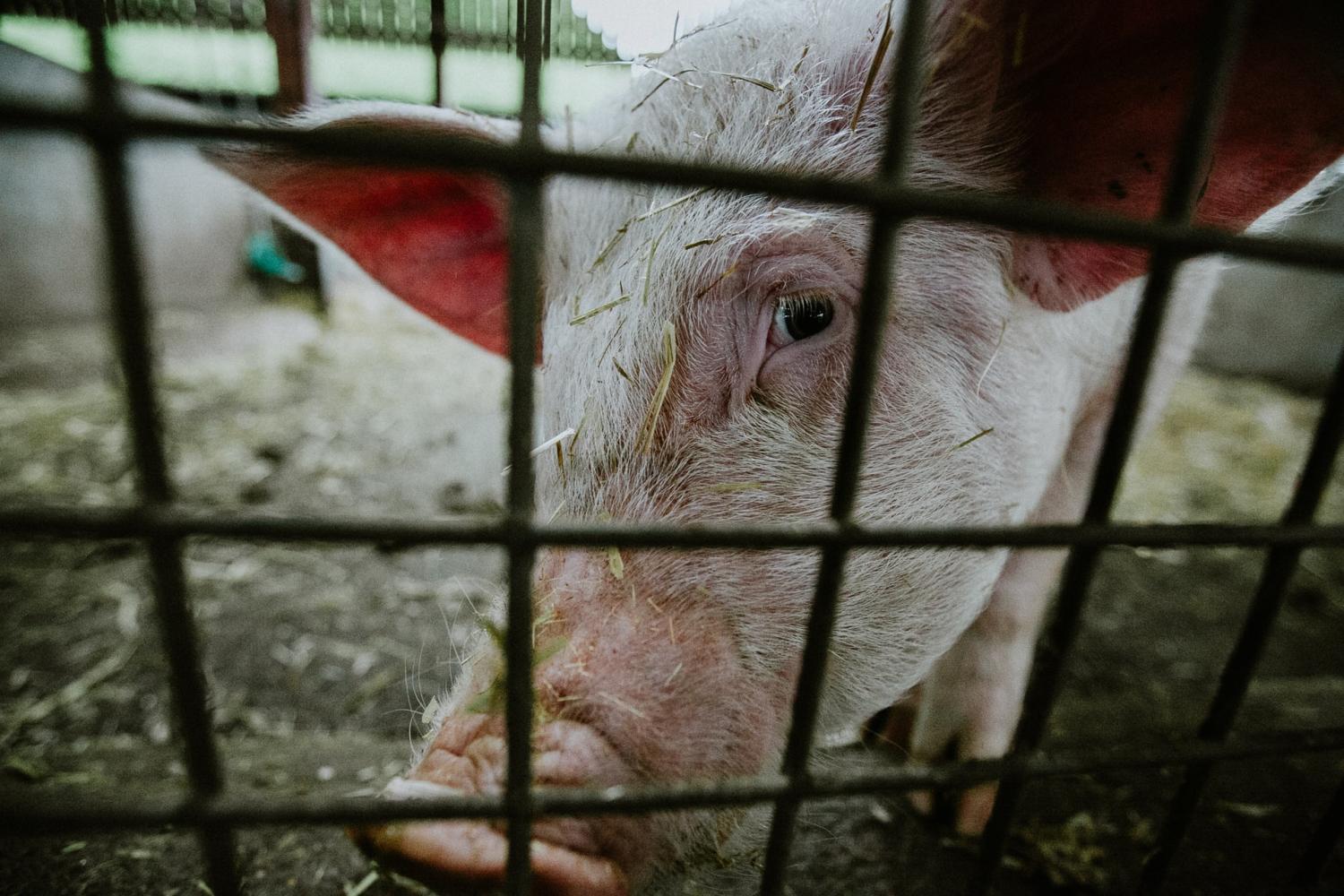
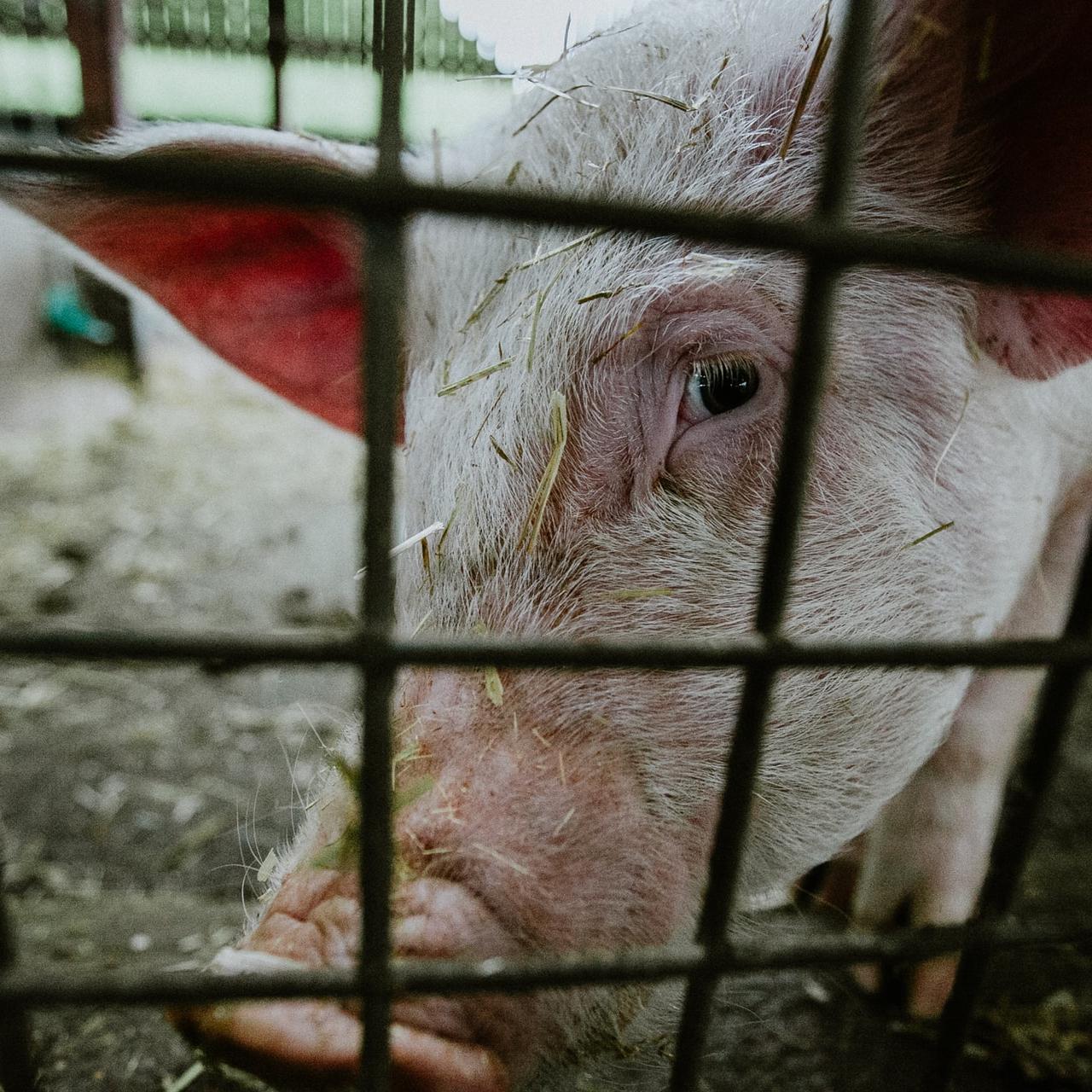
Over the years, companies have taken public stances on various social and environmental causes, whether they involve climate change, environmental degradation, detoxifying products, “standing” with Black citizens or improving the lives of the people who work within global supply chains. The frequent challenge, however, is following up and taking action on such promises. Animal welfare is one of those problems that have helped companies generate buzz when they announced changes to their policies and practices; the problem with some of these same companies, though, is the follow up.
About a decade ago, many companies pledged to improve their performance on animal welfare. Food producers and fast-food companies were front and center among brands saying they were determined to transform their supply chains so they could become more humane.
In particular, the practice of keeping pregnant sows in gestation crates were among the changes brands promised to end during the early 2010s. Consumers became aware of what critics often described as cruel and unsustainable conditions, so many companies pivoted and responded in kind. As the years went on, even though there were economic and brand reputational cases for improving animal welfare, evidence suggested that brands were falling short of their earlier promises.
In the latest development, the controversial financier and activist investor Carl Icahn has stepped into the fray over the use of gestation crates.
Icahn has certainly had a colorful career, with companies and brands including TWA, Pan Am, U.S. Steel, Marvel Comics and Lionsgate Films among his attempted and successful moves to either take over or wield his influence. Now, Icahn’s latest battle is a proxy fight over his criticism of McDonald’s animal welfare policies.
Over the weekend, Icahn announced his support for two proposed new members for McDonald’s board of directors, days after he told Bloomberg he feels “emotional about these animals and the unnecessary suffering” that they endure, adding that the use of gestation crates “have made us worse, not better.”
The outcome Icahn seeks is for McDonald’s to only source “crate-free” pork, as current practices to use gestation crates so pregnant sows cannot move is, in his words, “sadistic.”
Icahn made it clear that it’s not any financial gain he seeks, as he claimed that he personally owns only 100 shares of McDonald’s stock — the company puts that number at 200.
In any event, McDonald’s isn’t having it. While the company says it’s open to “promoting further collaboration across the industry on this issue,” in a public statement McDonald’s insists that it has been a leader in animal welfare. Further, the company noted it only sources about 1 percent of U.S. pork production, does not own any pigs, and does not directly produce or pack pork in the U.S.
McDonald’s also pointed out that Icahn is the majority owner of Viskase, a company that manufactures packaging and casing products for the meat industry.
The company also noted it was the first major brand to call for the end of using gestation crates back in 2012 and ultimately expects 85 to 90 percent of its pork to come from producers who eschew the practice. According to the company, 30 to 35 percent of U.S. pork has shifted to “group housing” systems.
But those numbers aren’t enough to sway Icahn, who told Bloomberg’s Erik Schatzker that he’s opposed to the practice, period. “We’re not going to fool around with them anymore,” Icahn said as he described his communications with the company’s leadership, adding, “you’ve [McDonald’s] gotta do this.”
Schatzker was incredulous that Icahn would take on such a campaign, asking at one point, “Seriously? This [gestation crates] is important enough to you that you’re willing to wage a proxy fight over it with McDonald’s?”
Icahn didn’t take the bait, and while he noted that family members had been instrumental in focusing more of his attention on this cause, he insisted he was determined to end any “unnecessary animal suffering.”
Meanwhile, the Humane Society of the U.S. (HSUS) has continued to call out the pork industry and the brands that it supplies. A decade ago, the organization supported food companies’ pledges to phase out the use of gestation crates. “But instead of actually ending their use of gestation crates, some major U.S. pork producers have simply reduced their use of them,” HSUS concluded in a recent report.
Image credit: Phil Hearing via Unsplash
Sea Level Rise Is Accelerating Faster Than We Thought, Affecting Industries Far Beyond Real Estate and Tourism
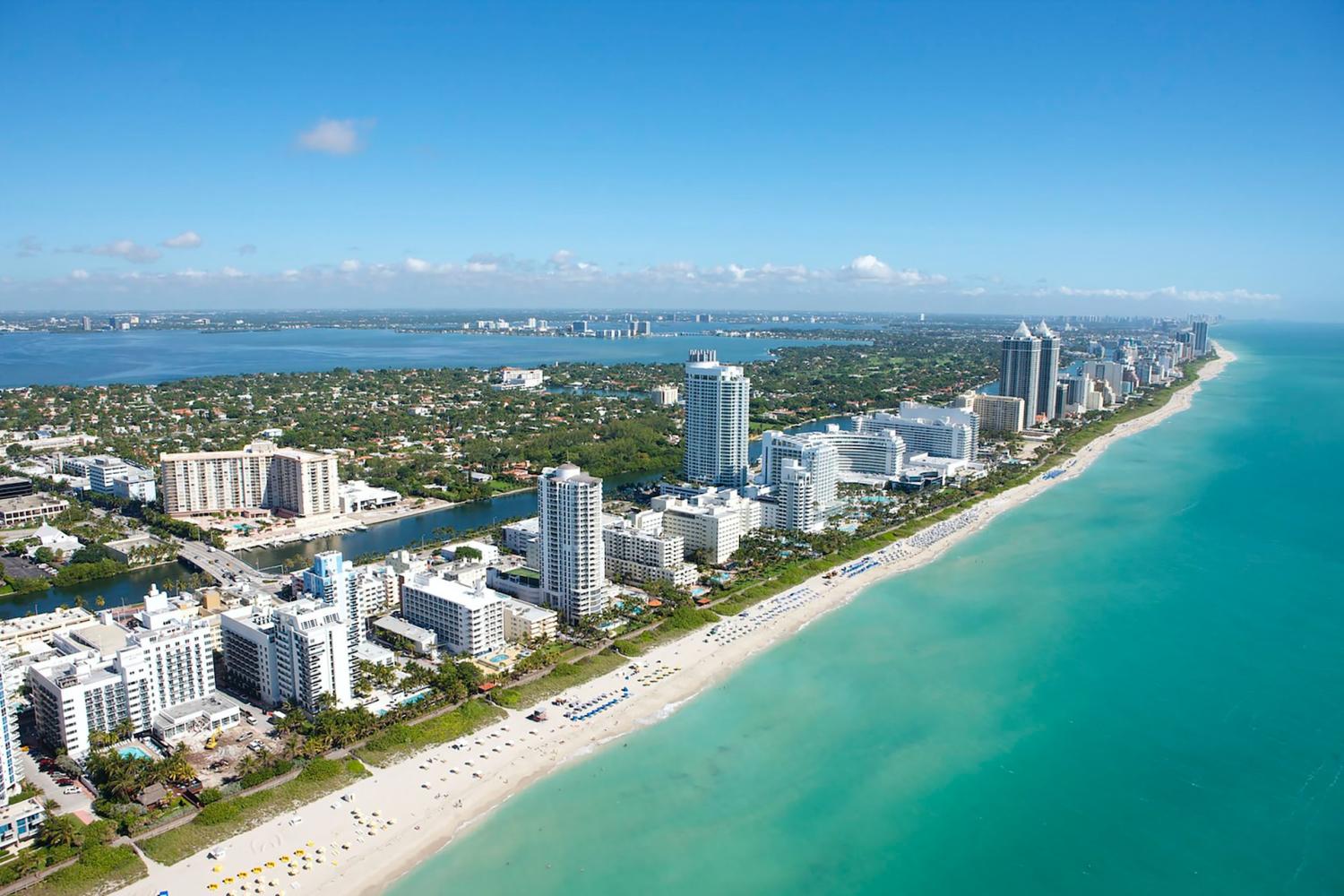
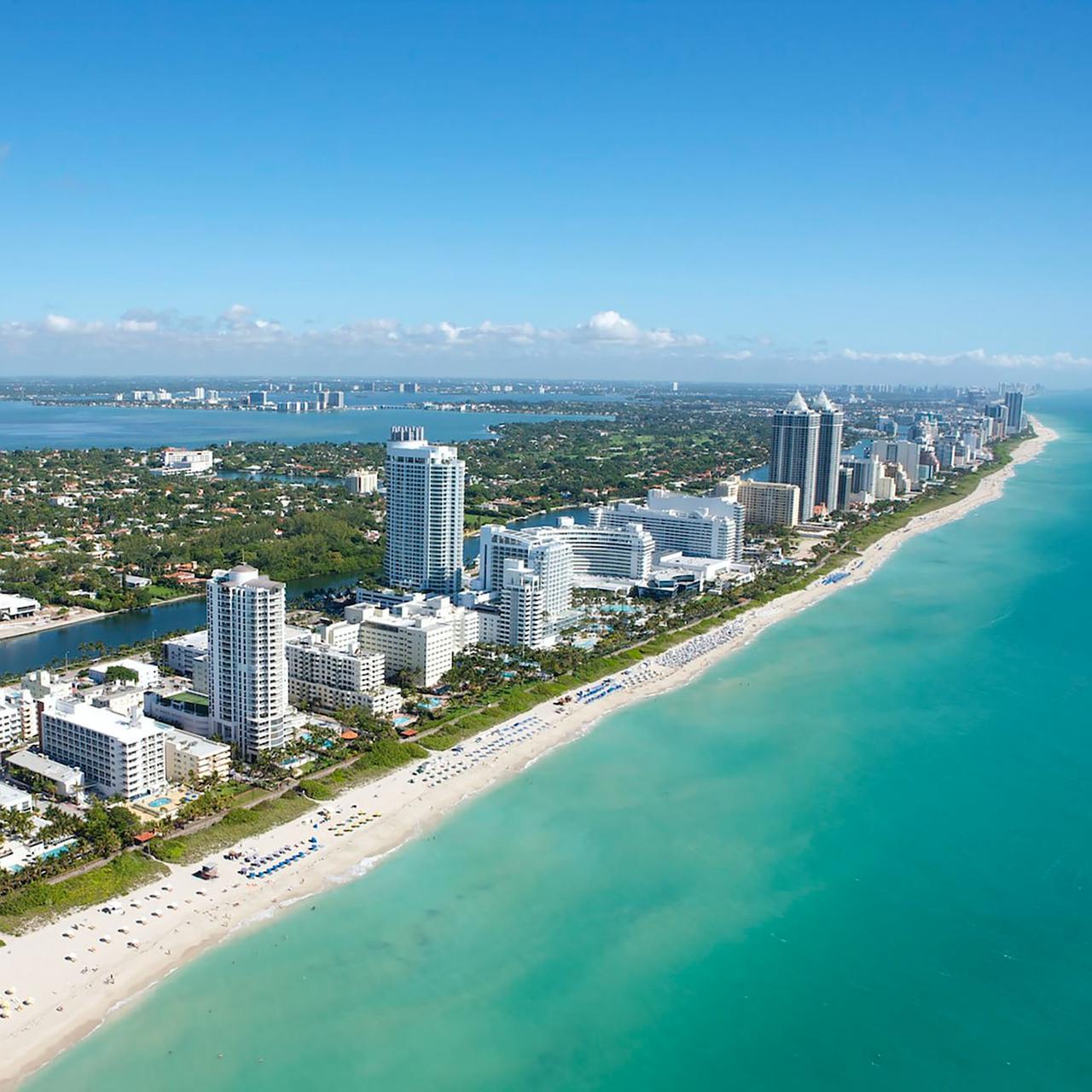
A new report from the National Oceanic and Atmospheric Administration (NOAA), NASA and several more U.S. federal agencies paint a dire picture of how sea level rise could affect U.S. coastal regions during the next several decades. Of course, such impacts will be felt worldwide during the 21st century: In Japan, for example, more than 4 million people face the risk of flooding later this century paired with more than a trillion dollars in economic losses.
At a higher level, the report lays out four key takeaways: sea level rise could surge 10 to 12 inches in the years leading up to 2050; “moderate” (i.e., damaging) floods from tide and storm surges could occur at a rate 10-fold compared to what is happening today; the failure to curb emissions could add up to an additional five to seven feet of sea level rise between today and the year 2100; and more people will be increasingly aware of these threats as the technologies that allow the monitoring of sea level rise will keep improving.
While those living along or near the coasts will be affected everywhere, from the West Coast to the Hawaiian Islands to remote areas of Alaska, the largest threats from sea level rise loom on the U.S. Eastern Seaboard (10 to 14 inches) and Gulf Coast (14 to 18 inches).
We’ve long known that sea level rise could wreak havoc within the real estate sector as millions of U.S. residents would be forced to move. But the long-term effects could also harm industries such as tourism, logistics and agriculture. Plus, there’s the specter of what could happen to local ecosystems, which would bring their own threats to local businesses up and down the coasts, including those far away from larger U.S. cities.
Take the state of Florida, which is already in the eye of the ongoing sea level rise storm. Miami-Dade County is already experiencing the effects of sea level rise, and future projections suggest another 17 inches of rising waters by 2040. While academics and the private sector have already started to respond to these changes, the Sunshine State’s booming real estate and tourism markets, financial sector, and lucrative agribusiness space would all face a reckoning.
With the state’s average elevation only a few feet above sea level, Florida’s multibillion-dollar farming industry would face numerous challenges. “Safeguarding and advancing agricultural production in south Florida means we must act now to reduce saltwater intrusion, which affects soil, surface and groundwater quality, and plant viability, given that many farmlands in Florida are near the coastline,” wrote Haimanote Bayabil and Yuncong Li for the Tampa Bay Times. “Even a slight increase in saltwater intrusion into Florida’s aquifers could have major repercussions in availability of fresh water for drinking and agricultural purposes.”
So far, much of the coasts’ natural terrain, along with infrastructure investments like the ones underway in New York City, can offer some protection against sea level rise — though in many areas, the very term “some” may already be an overly optimistic word. “Along some coasts, natural features like dunes and marshes may be holding back the sea a bit,” concluded Bob Berwyn for Inside Climate News, “but once the sea rises above those, it can spread inland, a big concern for Florida, where a lot of territory is barely above sea level.”
If there’s any good news in this latest report, it’s that U.S. agencies have the ability to track rapid changes in sea level rise. But considering the political polarization across the U.S. — and the fact that the private sector’s net zero ambitions aren’t quite adding up — the country is so far heading into a climate change gun fight with the equivalent of a butter knife.
“The threats to ecosystems, communities and livelihoods are growing,” the editorial board of the Washington Post wrote earlier today. “There is still time to act — but the window of opportunity is narrowing by the day.”
Image credit: Antonio Cuellar via Unsplash